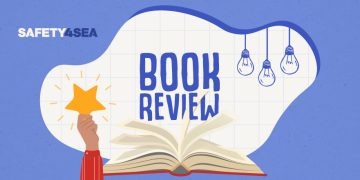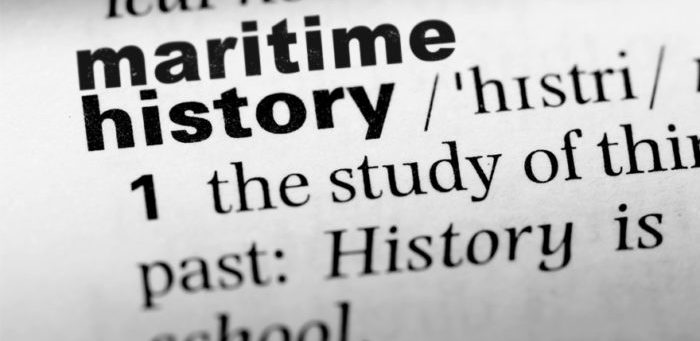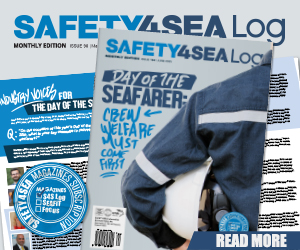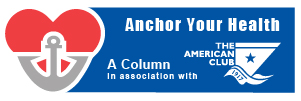On March 24th of 1989, one of the most catastrophic – if not the most catastrophic – oil spills of the 20th century took place. The tanker Exxon Valdez was departing the Port of Valdez, Alaska with a full load of North Slope crude oil, of approximately 1.26 million barrels, destined for Long Beach when it grounded on Bligh Reef in Prince William Sound. About 258,000 barrels of cargo were spilled as eight cargo tanks ruptured, causing one of the most shocking environmental disasters in the history of US.
How did the accident happen?
The US tankship Exxon Valdez had departed the Port of Valdez in Alaska, 1,263,000 barrels of crude oil, when it grounded on Bligh Reef in Prince William Sound, near Valdez, Alaska. At the time of the grounding, the vessel was under the navigational control of the third mate. No injuries, but 258,000 barrels of cargo were spilled resulting in catastrophic damage to the environment.
[smlsubform prepend=”GET THE SAFETY4SEA IN YOUR INBOX!” showname=false emailtxt=”” emailholder=”Enter your email address” showsubmit=true submittxt=”Submit” jsthanks=false thankyou=”Thank you for subscribing to our mailing list”]
Specifically, according to a report by the National Transportation Safety Board (NTSB), the third mate and the master of Exxon Valdez were on the bridge, moments before the accident. The two men were discussing about the route of the ship, when the master told the third mate that he would leave the bridge for a little while. He also instructed him to inform him (the master) when the ship was about to return to the traffic lanes, leaving the third mate in charge of this.
A little later the third mate ordered a hard right, to return to the traffic lanes and informed the master, through a phone call. When the call ended the third mate noticed that the course of the vessel had not changed. Namely, he said that despite the fact that the ship was swinging right, the radar did not show that. After a few moments he called again the master telling him “I think we are in serious trouble”.
At the end of the call, the ship hit the bottom and it sustained a series of sharp jolts for about 10 seconds. The third mate then tried to steer left, but because of the hard right swinging, the vessel could not turn left. When the ship stopped, the third mate reported that he smelled gas and crude oil vapor.
About 258,000 barrels of cargo were spilled in the sea. The damage to the vessel was estimated at $25 million, the cost of the lost cargo at $3.4 million, and the cost of the clean-up of the oil spill at $1.85 billion.
Environmental Pollution
When the accident happened, Exxon Valdez was carrying approximately 55 million US gallons (210,000 m3) of oil, of which about 10.1 to 11 million US gallons (240,000 to 260,000 bbl; 38,000 to 42,000 m3) ended up in the Prince William Sound. This spill had an enormous effect on animals, the coastline and indigenous population:
- The amount of oil spilled could fill 125 Olympic-sized swimming pools.
- Immediate effects included the deaths of 250,000 seabirds, 2,800 sea otters, 12 river otters, 300 harbor seals, 247 bald eagles, 22 orcas, and an unknown number of salmon and herring.
- 1,300 miles of coastline were hit by the oil spill.
- The oil spill affected 11,000 square miles of ocean.
- The spill caused over $300 million of economic harm to more than 32 thousand people whose livelihoods depended on commercial fishing.
- Tourism decreased by 8% in south central Alaska and by 35% in southwest Alaska in the year after the spill.
- Twelve years after the spill, oil could still be found on half of the 91 randomly selected beaches surveyed.
The clean-up operations started shortly after the accident using booms and skimmers. However, not all of the equipment was available at the time, and the thickness of the oil damaged some of it. As a result, and despite the help that many volunteers offered, only 10% of total oil was actually completely cleaned. Namely, studies have shown that more than 26 thousand gallons (98 m3) of oil remain in the contaminated shoreline, declining at a rate of less than 4% per year. Until today, oil remains on the beaches and has the same chemical compounds as those it had 11 days after the incident.[/two_third_last]
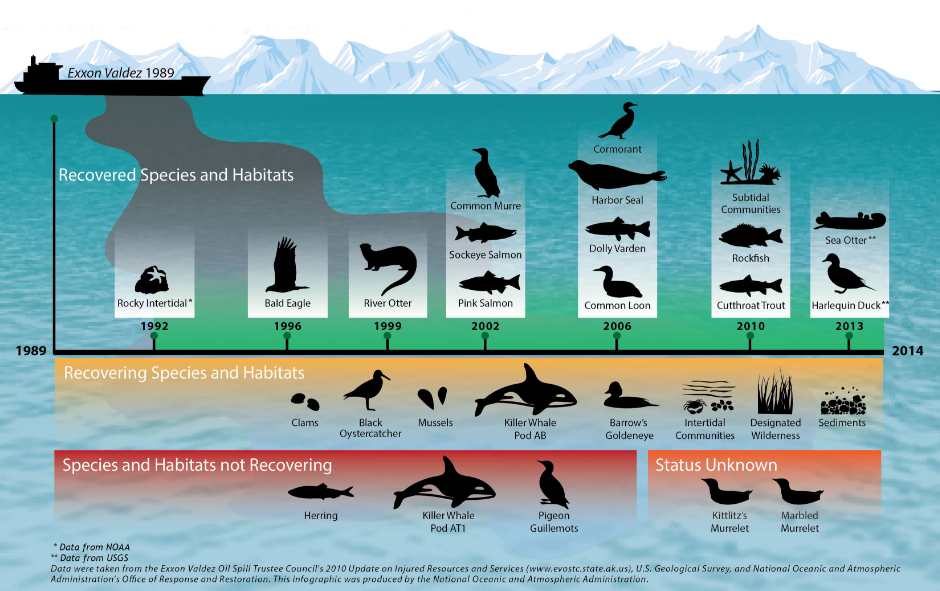
Investigation
When NTSB released the investigation about the accident, it focused on the failure of the third mate to maneuver the ship correctly, because of fatigue and excessive workload. The third mate could have had as little as 4 hours sleep before beginning work on March 23 and only a 1 to 2 hour nap in the afternoon. Thus, at the time of the grounding, he could have had as little as 5 or 6 hours of sleep in the previous 24 hours.
Another major issue is that the vessel did not have the proper amount of crewmembers working onboard. Evidence showed that watchkeeping safeguards on the Exxon Valdez were not on an appropriate standard because of the lack of crew.
The Safety Board considers the reduced manning practices of the Exxon Shipping Company generally incautious and without apparent justification from the standpoint of safety. The financial advantage derived from eliminating officers and crew from each vessel does not seem to justify incurring the foreseeable risks of serious accident.
Moreover, the investigation found that the company’s programs did not have measures in order to ensure the crew’s safety. In fact, NTSB concluded to the following:
- Absence of company programs to ensure that crewmembers observed 4 hours-of-service regulations;
- Lack of procedures to ensure that at least one rested deck officer, in addition to the master, was available for watch at departure;
- The practice of rating a crewmember’s performance according to willingness to work overtime, gave an incentive to work an excessive number of hours;
- Increase in workloads and standby time throughout the fleet before and after the grounding of the Exxon Valdez.
An interesting part of the investigation is the finding that the master failed to provide a proper navigation watch because of an alcohol problem. The master’s supervisor did not know that the master had an alcohol dependency problem before his hospitalization.
However, when the supervisor learned about this problem, he should have referred his case to the medical department. The personnel documents provided by Exxon showed that a follow-up treatment program was recommended by the attending physician at the hospital. The master was given a 90-day leave of absence, but there are no documents showing that the recommended treatment program was followed or that the master’s progress was monitored by the management.
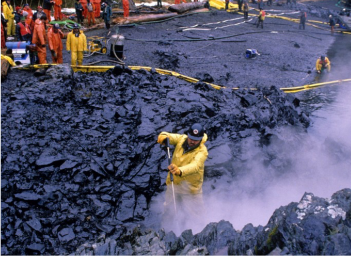
Recommendations
Concluding the report, NTSB made some recommendations to Exxon, as well as to the Alaska Regional Response Team. The recommendations to Exxon are the following:
- Eliminate personnel policies, including performance appraisal criteria, that encourage marine employees to work long hours without considering fatigue.
- Implement manning policies that prevent long working hours for crewmembers during cargo handling operations.
- Institute a policy forbidding deck officers to share navigation and cargo watch duties on a 6-hours-on, 6-hours-off basis, except in emergencies.
- Two licensed watch officers must be present to conn and navigate vessels in Prince William Sound.
- Implement an alcohol/drug program for seagoing employees that prevents such personnel from returning to sea until their alcohol/drug dependency problem is under control.
- Train persons in charge of the alcohol/drug rehabilitation program to use appropriate professional referrals, and improve skills necessary for competent rehabilitation supervision.
NTSB also recommended the Alaska Regional Response Team to develop clearer guides for dispersant use. This aimed to eliminate the need of a dispersant test before dispersants are used on an oil spill. The Alaska Regional Response Team should also include this information in the Alaska Regional Contingency Plan.
LEARN FROM THE PAST: Read in this series
The Exxon Valdez accident highlighted how important is the crew’s proper rest when operating a vessel.
- A proper resting period is vital for the safe operation of a vessel. Long working hours can be harmful for the crew’s ability to assess difficult situations correctly.
- An appropriate number of personnel onboard is crucial. This will make sure that crewmembers can have rest periods, and it will improve the operation of the ship in general.
- The vessels’ companies must be aware of the situation onboard a vessel, as well as their crew’s competency. If a company is aware of a crewmember’s dependency, it should help this member rehabilitate, and make sure that he/she is fit to be onboard a vessel after the rehabilitation.
- Shore staff must be well trained for situations of alcohol or drug dependency problems. The staff should know what needs to be done in order to, firstly, help the seafarer in need. Then they should make sure that this person is capable of working onboard a vessel again.
- An oil spill is catastrophic for the marine environment and extremely difficult to be cleaned. Many animals, the sea and even people felt the effects of the Exxon Valdez oil spill. What is more, because of the thickness of oil, its complete clean-up is almost impossible. As studies have shown, oil from the Exxon Valdez still affects some areas in Alaska. This highlights the importance for prevention measures, in order to reduce similar accidents in the future.












